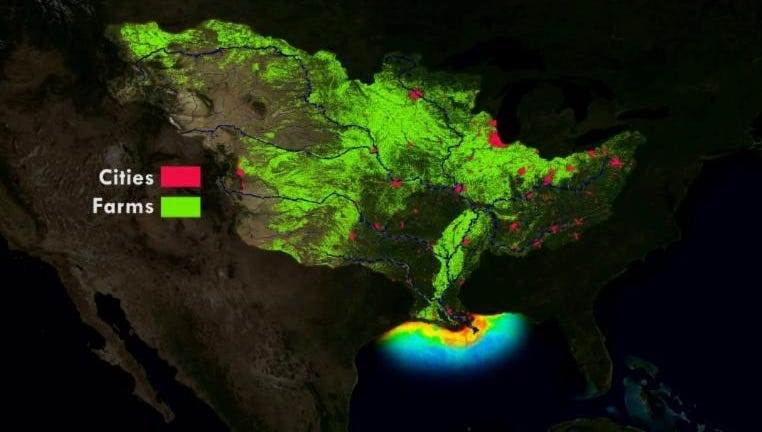The annual Gulf of Mexico "dead zone" – a region of oxygen-depleted water off the Louisiana and Texas coasts that's harmful to sea life – is larger-than-average this summer, federal scientists from NOAA announced in a report released Tuesday.
The zone this year is about 6,334 square miles, an area slightly larger than the state of Connecticut.
The average Gulf dead zone, based on data from the past five years, is about 5,380 square miles.
A dead zone occurs at the bottom of a body of water when there isn't enough oxygen in the water to support marine life. Also known as hypoxia, it's created by nutrient runoff, mostly from over-application of fertilizer on agricultural fields during the spring.
Nutrients such as nitrogen can spur the growth of algae, and when the algae die, their decay consumes oxygen faster than it can be brought down from the surface, NOAA said. As a result, fish, shrimp and crabs can suffocate.
Air pollution: Yes, your deodorant, sun block and bug spray are polluting the air
The pollution has caused an estimated $2.4 billion in damage to fisheries and marine habitat every year since 1980, the Union of Concerned Scientists said in a study released last summer.
The latest estimate was produced after a team of scientists at LSU and the Louisiana Universities Marine Consortium marine research center in Cocodrie, Louisiana, completed a weeklong research cruise through the Gulf on Sunday.

“The distribution of the low dissolved oxygen was unusual this summer,” Nancy Rabalais, a Louisiana State University researcher who has led the dead zone studies for years, said in a news release. “The area from the Mississippi River to the Atchafalaya River, which is usually larger than the area to the west of the Atchafalaya, was smaller. The area to the west of the Atchafalaya River was much larger.
"The low oxygen conditions were very close to shore, with many observations showing an almost complete lack of oxygen,” she said.
This summer's dead zone is about three times times larger than the goal a task force of state and federal agencies set in 2001. Environmental groups have long criticized the task force, formed in 1997 and led by the U.S. Environmental Protection Agency, for a lack of progress toward its goal of keeping the dead zone’s five-year average to no greater than 1,900 square miles.
The Hypoxia Task Force is accelerating progress toward reducing the river pollution by promoting collaboration among federal partners, states, farmers and others, NOAA said. Officials cited several programs funded by federal agencies that aim to help reduce fertilizer runoff and other pollution sources.
“Each of the Hypoxia Task Force states are committed to showing continuous improvement toward the goals outlined in our state-level nutrient reduction strategies," Mike Naig, Iowa’s Secretary of Agriculture and the group's co-chairman, said in the release.
"We know that changes on the land lead to positive changes in the water, and these investments benefit our local communities and our neighbors downstream," he said.
Contributing: Keith Magill, The Courier, Houma, La.
2021-08-03T23:34:08Z

